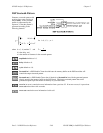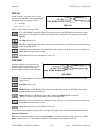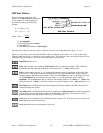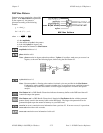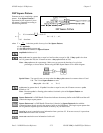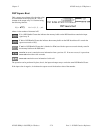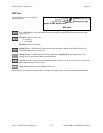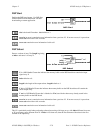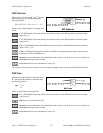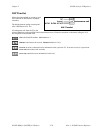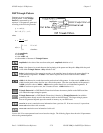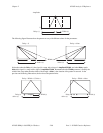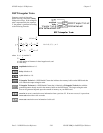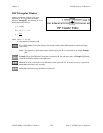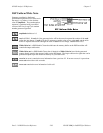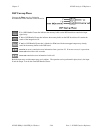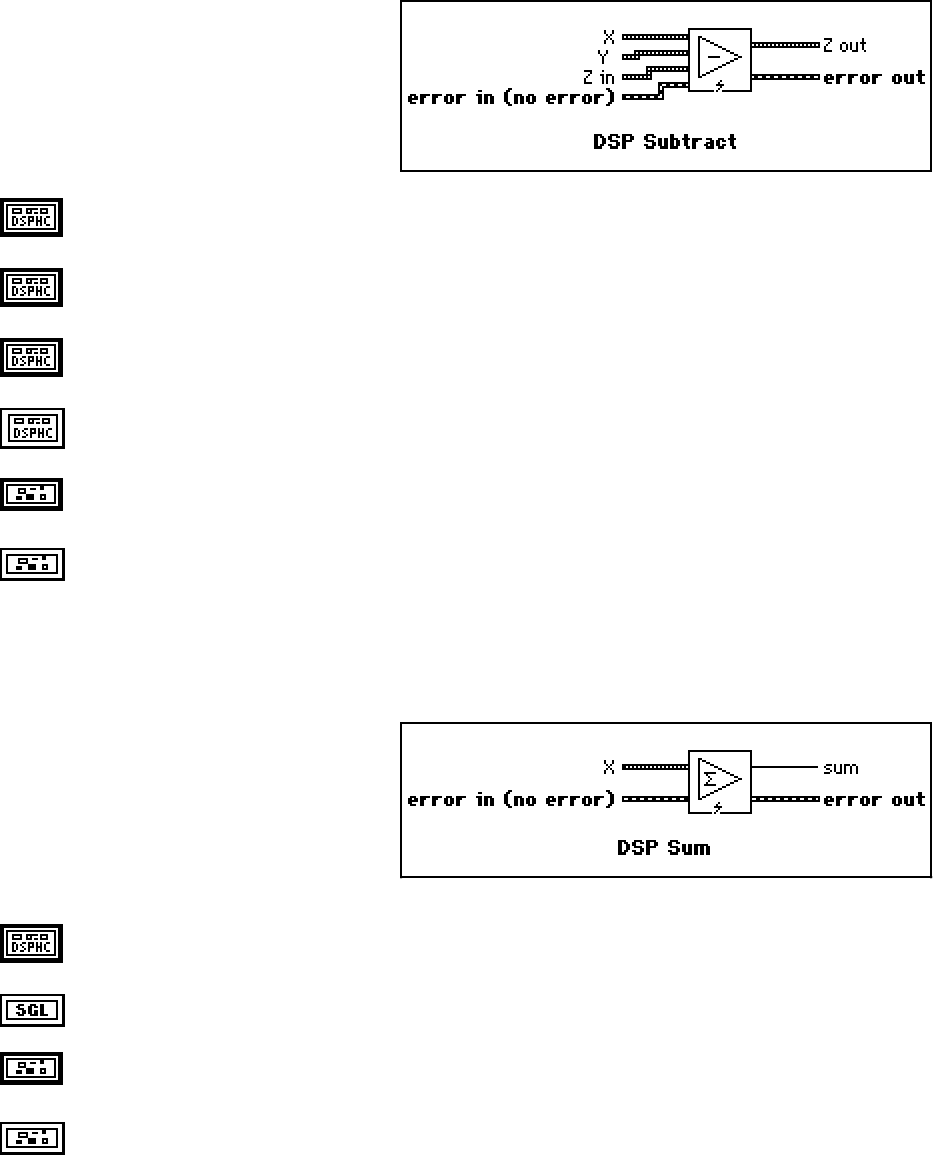
NI-DSP Analysis VI Reference Chapter 2
Part 3: NI-DSP Function Reference 2-77 NI-DSP SRM for LabVIEW for Windows
DSP Subtract
Subtract array Y from array X. The i
th
element
of the output array Z is obtained using the
following formula:
Z(i) = X(i) -Y(i).for i = 0, 1, 2, …, n-1 ,
where n is the smaller number of elements in X
and Y.
X is a DSP Handle Cluster that indicates the memory buffer on the DSP board that contains the input
signal array X.
Y is a DSP Handle Cluster that indicates the memory buffer on the DSP board that contains the input
signal array Y.
Z in is a DSP Handle Cluster that indicates the memory buffer on the DSP board that will contain the
results of X(i) - Y(i).
Z out is a DSP Handle Cluster that is identical to Z in, but with the subtracted results already stored in
the memory buffer on the DSP board.
error in (no error) contains the error information from a previous VI. If an error occurs, it is passed out
error out and no other calls are made.
error out contains the error information for this call.
The operation can be performed in place; that is, the input and output arrays can be the same DSP Handle Cluster.
DSP Sum
Find the sum of the elements of the input array
X. The sum of the elements is obtained using
the following formula:
sum = X(i)
i=0
n-1
∑
where n is the number of elements in X.
X is a DSP Handle Cluster that indicates the memory buffer on the DSP board that contains the input
signal array X.
sum is the sum of the elements in X.
error in (no error) contains the error information from a previous VI. If an error occurs, it is passed out
error out and no other calls are made.
error out contains the error information for this call.



